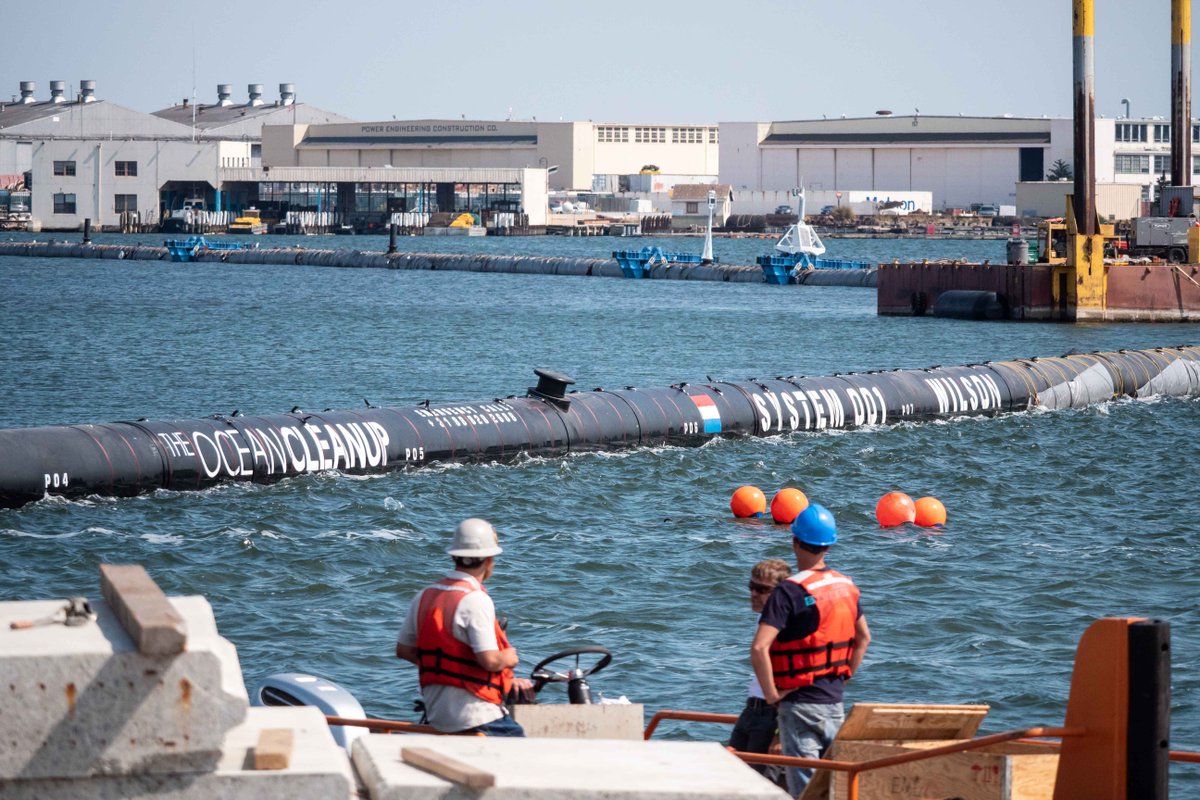
He noted the group's funding comes from companies "that are actually making the products and packaging. Marcus Eriksen, co-founder of the 5 Gyres Institute, a plastic pollution research organization in California, expressed frustration that "this downstream, end-of-the-line narrative (is) still (getting) a lot of attention." Marine scientists have long lambasted Slat's vision. "It has to be removed if we want to return to clean oceans." "The plastic that is already in the ocean - accumulated in those garbage patches - is not going away by itself,” Slat told Reuters. Prone to seasickness, the Ocean Cleanup's founder Slat does not often venture out onto the open ocean. 'WHAT DO YOU DO WITH THE TRASH YOU COLLECT?' "We see the value in not just the outcome of Ocean Cleanup's programs, but also the iterative learning process," said Robin Townley, head of special project logistics at Maersk.

Maersk told Reuters that, because of the patch's harsh and remote location, large vessels were needed to assist Jenny's operations. "Preferably we would have done something without any carbon footprint," Dubois said.

The Ocean Cleanup is purchasing carbon credits to offset the heavy fuel use and noted that Maersk is experimenting with less-polluting biofuels. The group regrets its reliance on ships that release climate-warming greenhouse emissions. At that scale, organizers say, the effort could recover between 15,000 and 20,000 tonnes of plastic a year, though it would cost hundreds of millions of dollars. The Ocean Cleanup hopes eventually to deploy 10 to 15 expanded-range Jennys - powered by 20 to 30 ships - to operate round the clock 365 days a year at the garbage patch. "Jenny has outperformed everything we've done so far," Dubois said of the recent six-week trials, during which the system picked up plastics small as 1 centimeter in diameter. An underwater camera helps make sure marine life does not become entangled. With the Jenny system, two fuel-powered Maersk vessels tow the 520-meter wide horseshoe-shaped catchment system across the ocean surface.
OCEAN CLEANUP PATCH
A later design, System 001B, was more efficient, but the team estimated they would need 150 such systems to clear the patch at a high cost. But that first system, named Wilson, bobbed ineffectively alongside the garbage until it ultimately broke. The Ocean Cleanup, created by Dutch inventor Boyan Slat when he was 18, initially planned on using an autonomous floating system driven by wind, waves and currents to remove plastic. If the flow of plastic into the ocean continues unabated, the seas will contain more plastic mass than fish by 2050, according to the World Economic Forum.

The group estimates the patch holds at least 79,000 tonnes of plastic. The Ocean Cleanup's first target is the Great Pacific Garbage Patch, the world’s largest swirling mass of marine debris spanning 1.6 million square kilometers in the North Pacific between California and Hawaii. "Once plastic has gotten into the open ocean, it becomes very expensive and fossil-fuel intensive to get it back out again." "I think they’re coming from a good place of wanting to help the ocean, but by far the best way to help the ocean is to prevent plastic from getting in the ocean in the first place," said Miriam Goldstein, director of ocean policy at the Center for American Progress think tank. The Ocean Cleanup spokesperson Joost Dubois described the amount as "on the high end of our estimates" and emphasized that it was still just in the test phase. Moller-Maersk (MAERSKb.CO), had fixed assets over $51 million (43 million euros) at the end of 2020.ĭuring 120 hours of deployment last month, System 002 - or "Jenny" as the crew nicknamed it - scooped up 8.2 tonnes of plastic, or less than a garbage truck’s standard haul. The Ocean Cleanup, funded by cash donations and corporations including Coca-Cola (KO.N), as well as in-kind donors like A.P.


 0 kommentar(er)
0 kommentar(er)
